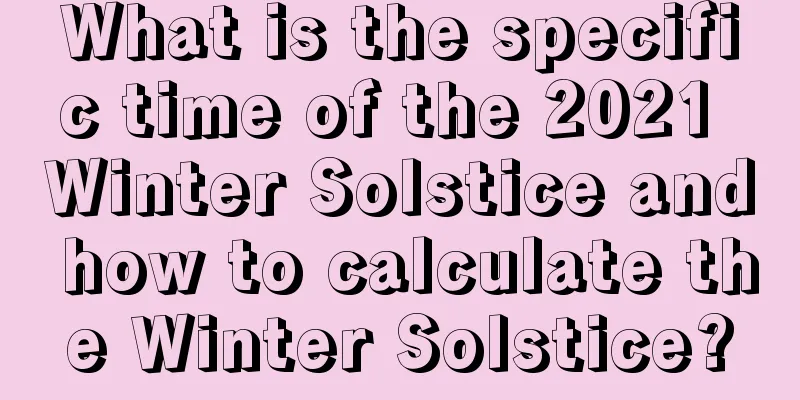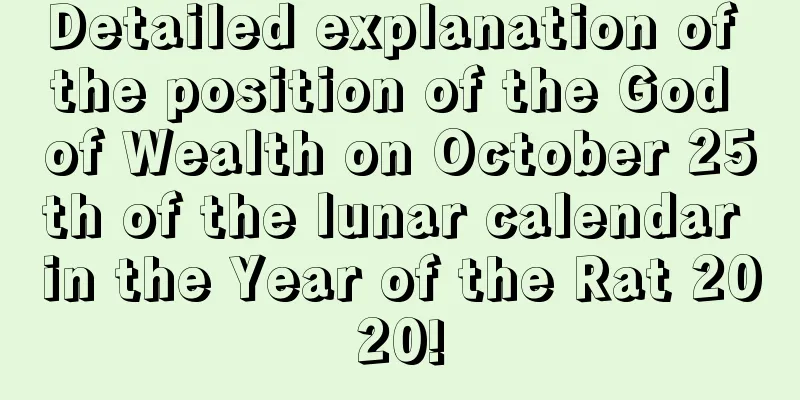What is the specific time of the 2021 Winter Solstice and how to calculate the Winter Solstice?

There are 12 hours in every day. In addition to the approximate range, the time point of each solar term can actually be subdivided into time points. Interested friends can come and find out, what is the specific time of the 2021 Winter Solstice solar term, and how to calculate the Winter Solstice point? "The coldest months of the year" refers to the three coldest months before the New Year. The coldest month is October, the winter month is November, and the twelfth month is December. What should we pay attention to in our daily lives? This winter, Mr. Shui Mo will accompany you through the eleventh month of the lunar calendar in 2021.What is the specific time of the 2021 Winter Solstice?The specific time of the winter solstice in 2021 is 18:02 on December 21st.The specific time of the winter solstice will be different in the next ten years, and there is no pattern to follow. The exact time of the winter solstice in 2022: 05:37 on December 22, 2022 in the Gregorian calendar The exact time of the winter solstice in 2023: 11:23 on December 22, 2023 in the Gregorian calendar The exact time of the winter solstice in 2024: 17:18 on December 21, 2024 in the Gregorian calendar The exact time of the winter solstice in 2025: 23:04 on December 21, 2025 in the Gregorian calendar The exact time of the winter solstice in 2026: 04:53 on December 22, 2026 in the Gregorian calendar The exact time of the winter solstice in 2027: 10:46 on December 22, 2027 in the Gregorian calendar The exact time of the winter solstice in 2028: 16:31 on December 21, 2028 in the Gregorian calendar The exact time of the winter solstice in 2029: December 21, 2029, 22:23 The exact time of the winter solstice in 2030: 04:14 on December 22, 2030 in the Gregorian calendar The exact time of the winter solstice in 2031: 09:59 on December 22, 2031 in the Gregorian calendar How to calculate the winter solsticeIn ancient times, in order to further improve the accuracy of the calendar, it was necessary to improve the measurement method of the winter solstice.After the Western Han Dynasty, ancient astronomers generally used an "eight-foot high table" to determine the date of the winter solstice. However, simply measuring with the "eight-foot high table" cannot produce ideal results. Zu Chongzhi first improved the observation technique to increase the observation accuracy. Since the shadow length change before and after the winter solstice is not very obvious, it is difficult to accurately determine the time of the winter solstice. More importantly, simple measurement can only obtain the date of the winter solstice, but cannot determine "what time" of the day is the winter solstice! Zu Chongzhi came up with a new method. He did not directly observe the length of the shadow on the winter solstice, but observed the length of the shadow twenty-three or twenty-four days before and after the winter solstice. He then took the average of the shadows to find the date and time of the winter solstice. Because the shadow changes faster as it is farther away from the winter solstice, this method improves the accuracy of measuring the time of the winter solstice. Zu Chongzhi was the first person in the world to use this observation method. The year in the Da Ming calendar formulated by Zu Chongzhi actually had 365.2428 days, which was very precise at that time. It was not until the Southern Song Dynasty that people reached or surpassed Zu Chongzhi's level of observation. Zu Chongzhi carefully studied the changing pattern of daily shadow length, and using the symmetry of the shadow length before and after the winter solstice, he proposed a new method to determine the time of the winter solstice. This method is not affected by the inability to measure the shadow due to clouds blocking the sun, and can be used to calculate the time of the winter solstice. This method has been used for a long time in later generations. That is, take the length of the sundial shadow a few days before and after the winter solstice, convert it to get the midpoint, which is used as the winter solstice date, and calculate the winter solstice time by the difference in shadow length each day. Zhou Cong of the Song Dynasty used the shadows of the Beginning of Winter and the Beginning of Spring to calculate. He believed that the winter solstice was far away and the number of days was much different, so it was easier to calculate. The calendars after the "Ji Yuan Calendar" made the calculation methods more detailed, but in essence they were all Zu Chongzhi's methods. By accurately finding the specific time of the two winter solstices and then dividing it by the number of years, we can get the average length of the tropical year. If the recording time is long enough, the error will become smaller. We often say that Guo Shoujing of the Yuan Dynasty measured the length of the tropical year to be 365.2425 days. He actually used long-term data starting from the Liu Song Dynasty. By increasing the measuring length, the error is greatly reduced. Ancient Chinese astronomy already had the "ecliptic" (auspicious days) and naturally also the "ecliptic degrees". In ancient history, the winter solstice was mostly measured using the "Dingqi Method", but other calculations used the Pingqi Method. Both methods existed simultaneously in one calendar, but in major events, the Dingqi Method was used as the standard. This was to verify accuracy and adopt the "Dingqi Method" that could reflect authenticity. Therefore, later on, the "fixed qi" algorithm was used to calculate the 24 solar terms, which is to divide the celestial cycle (the path of the sun against the background of the starry sky in a tropical year) into 24 equal parts in terms of angle. Dividing the celestial circle into 360 degrees and 365.25 degrees does not affect the accuracy of the calculation of the final 24 solar terms. After all, they are all equally divided. All you have to do is find the relative position of the star background. However, what is affected is the daily degree of the analgesia. When the celestial sphere is divided into 365.25 degrees, the analgesia is one degree per day. If it is changed to 360 degrees, it will be a little inconvenient to calculate. This is why the ancients used 365.25 degrees to divide the celestial sphere. Although your life's destiny is already determined, you can understand and grasp your future fortune in advance. Click on the [Premium Calculation] below to calculate your latest fortune! |
>>: Introduction to the zodiac signs of children born on December 21st of the lunar calendar in 2021
Recommend
Is February 11th of the lunar calendar 2020 a good day? Can’t travel that day?
The quality of a day is different every day, so le...
What day is March 29th in the lunar calendar in 2020? Is it an auspicious day?
Some days are auspicious and some are inauspiciou...
Is the eleventh day of the eleventh lunar month in 2017 not suitable for starting renovations?
Introduction: Home is the place that people come i...
What day is March 26th in the lunar calendar in 2018? What month and date is it?
The third month of the lunar calendar is the last...
Is it a good idea to worship ancestors on March 13th of the lunar calendar in 2022? Is it an auspicious day for ancestor worship?
It is also very important to choose a good time to...
Query the location of the God of Wealth on the tenth day of the third lunar month in 2019
Some days are auspicious, while others are inausp...
Is the 27th day of the 12th lunar month of 2020 a good day? The hexagram of February 8, 2021
Introduction: Every day unfolds differently, becau...
Is the heavy snow on October 23, 2020 an auspicious day for moving graves? The sunset time of the heavy snow in 2020
Introduction: Generally speaking, it is necessary ...
Is it good for a puppy to be born in October of the lunar calendar in 2018? Which month is the best to be born?
In the tenth month of the lunar calendar, the firs...
Check the auspiciousness and inauspiciousness of the time on the National Day on September 3, 2019. What year is the National Day this year?
Introduction: Not only are the days of each day di...
When is Double Ninth Festival in 2021? What needs to be done on the day?
The Double Ninth Festival is one of the four major...
Is the baby born on the seventh day of the Lunar New Year in 2018 lucky? Will he be successful in his studies?
The days before and after the Spring Festival are ...
Is it okay to choose April 24th of the lunar calendar as the funeral date in 2020?
An auspicious day must be chosen for the funeral. ...
Is the 26th day of the first lunar month in 2020 suitable for opening a new store?
Is the 26th day of the first lunar month in 2020 ...
Why do the Yi people celebrate the New Year in the tenth month of the lunar calendar? Why is the Yi New Year in the tenth month of the lunar calendar?
The Yi New Year is called "Ku Shi" in Li...









